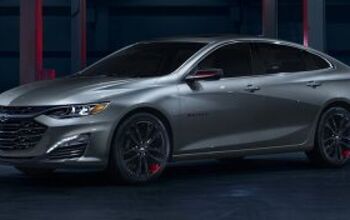Fire Puts Hydrogen-Powered Corolla Racer Out of Action

Toyota’s hydrogen-powered GR Corolla caught fire while testing at Fuji International Speedway last week, putting the vehicle out of action for the foreseeable future. The #32 ORC Rookie GR Corolla H2 Concept was designed as a proof of concept that fuel-cell vehicles can make excellent racers, that Toyota’s pursuit of hydrogen power hasn’t been in vain, and that net-zero emissions are achievable.
It was also supposed to compete in the first round of the ENEOS Super Taikyu Series 2023 sponsored by Hankook this weekend. However, Toyota has elected to run with the gasoline-powered ORC Rookie GR Yaris while the hydrogen model remains out of action.
With numerous automakers once again praising hydrogen as an alternative energy option, the fire has stripped Toyota’s ability to brag that it was correct all along. Then again, race cars catch fire more often than you might imagine and this may not be indicative of any shortcomings with the technology. The manufacturer seems to be making this case, too. Based on this week’s press release, the alleged culprit was nothing more than a pipe fitting rattling loose after sustained testing.
From Toyota Gazoo Racing:
During a private test run at Fuji International Speedway on March 8, a vehicle fire occurred due to a hydrogen leak from a gaseous hydrogen pipe in the engine compartment. Consequently, we could not recover the vehicle in time and were forced to abandon the race. Instead, we plan to participate with the ORC ROOKIE GR Yaris (gasoline engine).
We apologize for the concern this may cause the many people looking forward to seeing the hydrogen-powered Corolla on the track.
The hydrogen-powered Corolla in the March 8 test run used liquid hydrogen. However, the vehicle fire was not directly caused by the fuel change from gaseous hydrogen to liquid hydrogen. The cause is seen to be the loosening of a piping joint from vehicle vibration, resulting in a hydrogen leak. As the piping joint is located near the engine, the leaked hydrogen ignited when heated.
It was found that the hydrogen leak sensor fail-safe functioned properly so that the hydrogen supply was shut off, avoiding a significant spread of the fire. As a result, the cabin was protected, and the safety measures for the occupants were confirmed.
The rest of the car wasn’t so lucky and sounds like it’s going to be out of commission for a while. Toyota’s racing team has said it would like to review the piping design that caused the hydrogen leak so that it can continue building safer vehicles.
While your author is ready to be skeptical about the future of hydrogen vehicles over questions pertaining to its lackluster fueling infrastructure and the fact that production uses methane gas while emitting a significant amount of carbon dioxide, it’s harder to chide Toyota for chasing down novel technologies. Even if green hydrogen (based around electrolysis using renewable energy sources) turns out to be impossible, it doesn’t seem fair to lambast someone for trying something new.
But this remains an embarrassing moment for one of the companies that haven’t given up on hydrogen-powered vehicles, as the general public won’t be looking at the efficiency breakdowns of hydrogen production. They’ll just look at the headline, note that a hydrogen-powered Toyota caught fire, and get on with their day a little more skeptical of the technology than they were before.
[Image: Toyota]
Become a TTAC insider. Get the latest news, features, TTAC takes, and everything else that gets to the truth about cars first by subscribing to our newsletter.

A staunch consumer advocate tracking industry trends and regulation. Before joining TTAC, Matt spent a decade working for marketing and research firms based in NYC. Clients included several of the world’s largest automakers, global tire brands, and aftermarket part suppliers. Dissatisfied with the corporate world and resentful of having to wear suits everyday, he pivoted to writing about cars. Since then, that man has become an ardent supporter of the right-to-repair movement, been interviewed on the auto industry by national radio broadcasts, driven more rental cars than anyone ever should, participated in amateur rallying events, and received the requisite minimum training as sanctioned by the SCCA. Handy with a wrench, Matt grew up surrounded by Detroit auto workers and managed to get a pizza delivery job before he was legally eligible. He later found himself driving box trucks through Manhattan, guaranteeing future sympathy for actual truckers. He continues to conduct research pertaining to the automotive sector as an independent contractor and has since moved back to his native Michigan, closer to where the cars are born. A contrarian, Matt claims to prefer understeer — stating that front and all-wheel drive vehicles cater best to his driving style.
More by Matt Posky
Latest Car Reviews
Read moreLatest Product Reviews
Read moreRecent Comments
- Rick T. "If your driving conditions include near-freezing temps for a few months of the year, seek out a set of all-seasons. But if sunshine is frequent and the spectre of 60F weather strikes fear into the hearts of your neighbourhood, all-seasons could be a great choice." So all-seasons it is, apparently!
- 1995 SC Should anyone here get a wild hair and buy this I have the 500 dollar tool you need to bleed the rear brakes if you have to crack open the ABS. Given the state you will. I love these cars (obviously) but trust me, as an owner you will be miles ahead to shell out for one that was maintained. But properly sorted these things will devour highway miles and that 4.6 will run forever and should be way less of a diva than my blown 3.8 equipped one. (and forget the NA 3.8...140HP was no match for this car).As an aside, if you drive this you will instantly realize how ergonomically bad modern cars are.These wheels look like the 17's you could get on a Fox Body Cobra R. I've always had it in the back of my mind to get a set in the right bolt pattern so I could upgrade the brakes but I just don't want to mess up the ride. If that was too much to read, from someone intamately familiar with MN-12's, skip this one. The ground effects alone make it worth a pass. They are not esecially easy to work on either.
- Macca This one definitely brings back memories - my dad was a Ford-guy through the '80s and into the '90s, and my family had two MN12 vehicles, a '93 Thunderbird LX (maroon over gray) purchased for my mom around 1995 and an '89 Cougar LS (white over red velour, digital dash) for my brother's second car acquired a year or so later. The Essex V6's 140 hp was wholly inadequate for the ~3,600 lb car, but the look of the T-Bird seemed fairly exotic at the time in a small Midwest town. This was of course pre-modern internet days and we had no idea of the Essex head gasket woes held in store for both cars.The first to grenade was my bro's Cougar, circa 1997. My dad found a crate 3.8L and a local mechanic replaced it - though the new engine never felt quite right (rough idle). I remember expecting something miraculous from the new engine and then realizing that it was substandard even when new. Shortly thereafter my dad replaced the Thunderbird for my mom and took the Cougar for a new highway commute, giving my brother the Thunderbird. Not long after, the T-Bird's 3.8L V6 also suffered from head gasket failure which spelled its demise again under my brother's ownership. The stately Cougar was sold to a family member and it suffered the same head gasket fate with about 60,000 miles on the new engine.Combine this with multiple first-gen Taurus transmission issues and a lemon '86 Aerostar and my dad's brand loyalty came to an end in the late '90s with his purchase of a fourth-gen Maxima. I saw a mid-90s Thunderbird the other day for the first time in ages and it's still a fairly handsome design. Shame the mechanicals were such a letdown.
- FreedMike It's a little rough...😄
- Rochester Always loved that wrap-around cockpit interior. The rest of this car, not so much. Between the two, it was always the mid-90's Cougar that caught my attention.




































Comments
Join the conversation
Which is better: burning Li-ion battery or exploding H2 tank?
The battle of hydrogen vs electric cars reminds me of the beta vs VHS battle.